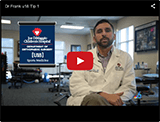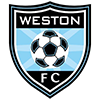Infantile Progressive Spinal Muscular Atrophy
Spinal muscular atrophy (SMA) is a genetically inherited neuromuscular condition which affects the motor neurons, the nerves of the spinal cord that control muscle movement. The muscles become extremely weak and deteriorate (waste) due to lack of activity.SMA is categorized into four types where SMA type 1, also known as the infantile onset or Werdnig-Hoffmann disease, is the most severe form.
Symptoms of spinal muscular atrophy include muscle weakness, poor head control and muscle tone, weak cry, legs weaker than arms, difficulty in swallowing and feeding, and inability to reach developmental milestones such as lifting the head and sitting up. Symptoms usually appear within the first few months of life but may develop in the womb. Some mothers may report feeling their babies become less active towards the end of the pregnancy. The life span of babies with infantile onset spinal muscular atrophy is not more than three years, with almost half of them dying in the first year. The life expectancy depends on the age of onset of the condition: the earlier the onset, the more severe and shorter the life span.
Infantile progressive spinal muscular atrophy is diagnosed based on physical examination and medical history review, and confirmed by DNA testing. Further tests, such as an electromyogram (determines the electrical activity of muscles), nerve conduction velocity test (determines the functioning of the nerves), muscle biopsy and genetic testing, may be considered.
As there is no cure for infantile progressive spinal muscular atrophy, treatment is aimed at managing symptoms, controlling complications and improving the quality of life. Treatment may include palliative care (medical care for relieving pain, symptoms and stress), occupational therapy, speech and language therapy, respiratory medicine and physiotherapy. In addition, parents should be counseled on methods to facilitate effective feeding, swallowing and diet.
-
Personalized Physical Therapy Puts Bryant Back on the Court
Bryant could hear the whistles blowing as he walked by the gymnasium.
View more -
No off-season for sports injuries
As a new season of school sports and youth leagues gets underway,
View more -
Student Athletes Benefit from Individualized Treatment at U18 Sports Medicine
Becoming involved in a sport is one of the healthiest things that a child can do.
View more -
For young athletes, injuries need special care
More programs are using procedures and surgical techniques tailored for kids.
View more -
Dr Frank u18 Tip 1
 View more
View more -
Segment U18 Tip with Dr Frank 1
 View more
View more -
Dr. Frank’s 2010 WQAM high school football game halftime interviews
View more




 Menu
Menu






 In The News
In The News Hollywood Office
Hollywood Office

![[U18] Sports Medicine](https://www.kidbones.net/wp-content/themes/ypo-theme/images/u18-sports-medicine-performing-arts-logo.png)












